St Michael, Gorillas, Pearlies & Urban Golf: Sunday 24th September was an unusual day for me, at times verging on the surreal as you can see from the pictures and the text below, a slightly corrected version of what I wrote at the time on My London Diary.
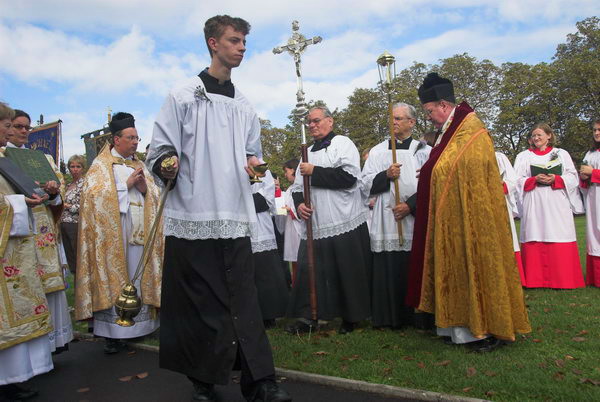
When I got up Sunday it poured with rain. What with that and the replacement bus service instead of trains, I almost stayed home, but I was glad I didn’t. By the time I arrived at Turnham Green, the sun was shining and four St Michaels were laying into a single angel with their plastic swords.

This was the Patronal Festival of the Anglican Church of St Michael And All Angels, a part of Bedford Park, the first garden suburb, begun in 1875. The event was complete with a not very fierce looking dragon and a colourfully dressed set of clerics and choristers.


From there I rushed off on the District Line to photograph gorillas running through the centre of London. This was raising money for the Dian Fossey Gorilla Fund which helps to save the world’s last remaining gorillas from poachers, civil war, human disease and deforestation.
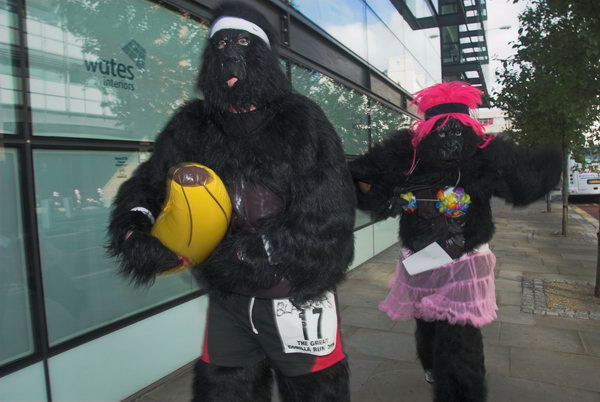
Running 7km in a gorilla suit isn’t my idea of fun, and by the finish the contestants – even those who had taken off their masks for the run – were swimming in sweat inside their costumes as they tucked into the free bananas and fruit smoothies.

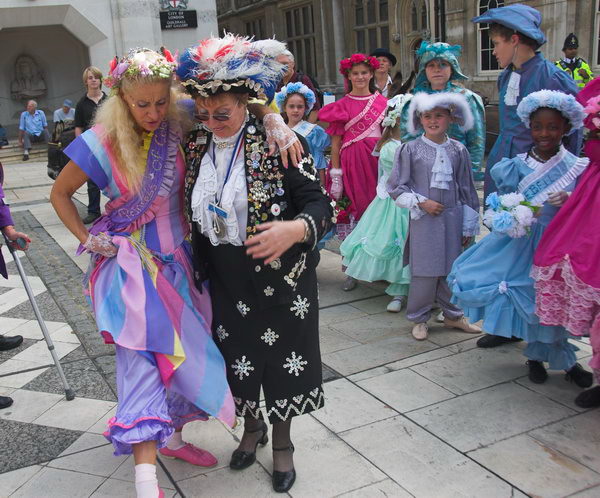
Things were a little more sedate at the Guildhall for the annual Pearly Kings And Queens (or Costermongers) Harvest Festival. As well as the pearlies and what looked like a pretty full set of inner London Mayors, along with a few donkey carts and a produce lorry there were people in various iinterpretations of Victorian dress, Chelsea Pensioners, and others of a vaguely traditional London character. The fairground organ looked good, although its music soon palls.
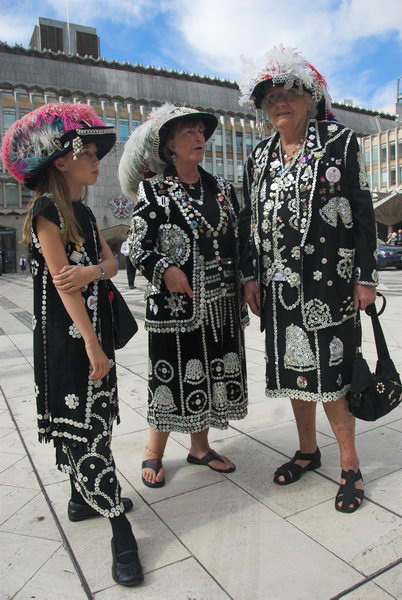
A colourful note was added by Donna Maria’s Maypole Dancers. Donna Maria was apparently a London May Queen having served her time in one of the South-east London realms. She revived maypole dancing with her group of girls dressed in flower costumes who give demonstrations at many events each year.
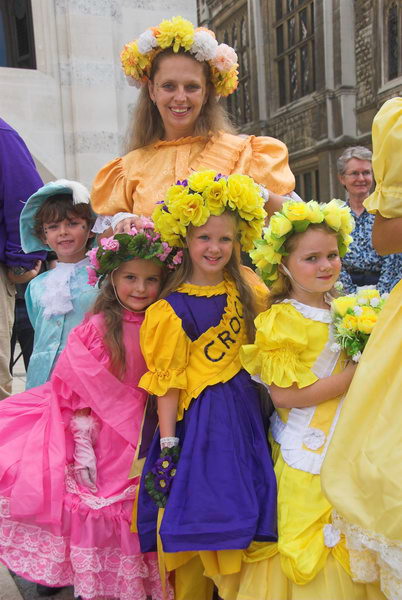
The golfing event of the weekend was not of course the Ryder cup (where Europe were thrashing the USA) but the Shoreditch Urban Open Golf Tournament. 18 holes covering most of Shoreditch between the City Road and Great Eastern Street make it the only par 72 urban course in the world.
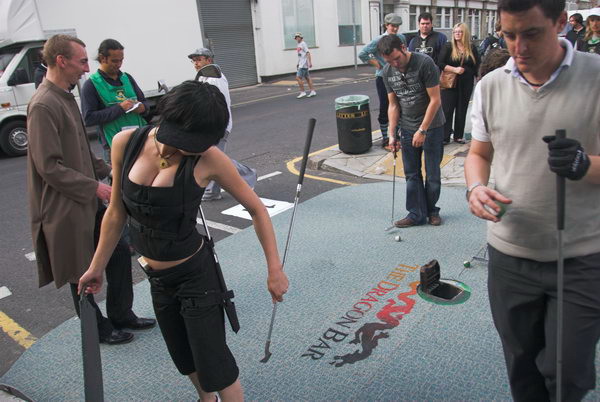
There are certain local rules that the Shoreditch Golf Club imposes, with the biggest change from the normal game being in the balls, which are considerably softer and lighter, to avoid damage to property and persons. Probably the greatest risk to both players and spectators (and photographers) were in the generously available free drinks thanks to the sponsors Jameson.
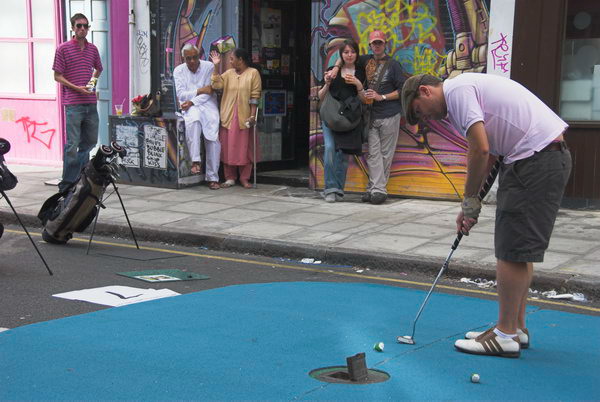
It was a nice afternoon, with a lot of people having fun, mainly watching the golfers. Some of the players looked very professional, a few even played as if they were, though I was please to see others obviously holding a club for the first time in their life. The caddies included some considerably more glamourous than you’d see at St Andrews.
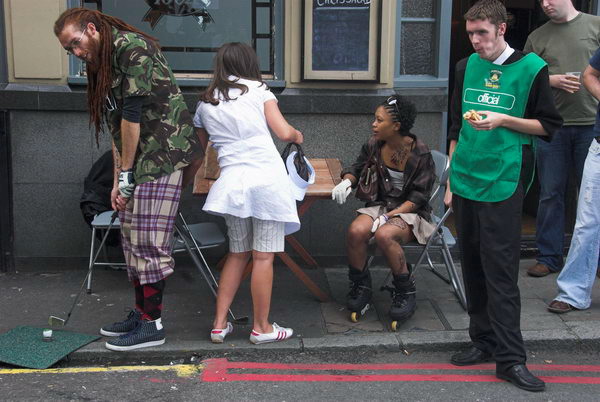
The course seemed well-planned, with a pub or bar more or less at every green (and a few in-between.) I’m surprised there weren’t more golfers taking advantage of the opportunity, as this must be the best course in the country (or at least in the City.)
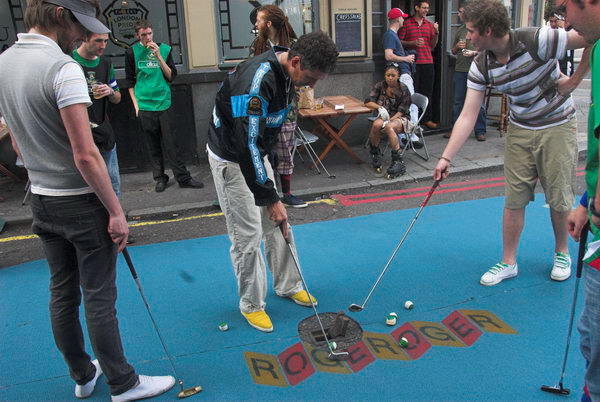
Flickr – Facebook – My London Diary – Hull Photos – Lea Valley – Paris
London’s Industrial Heritage – London Photos
All photographs on this page are copyright © Peter Marshall.
Contact me to buy prints or licence to reproduce.






